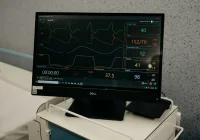Artificial intelligence scribes are moving from pilot projects to enterprise deployment, promising to reduce documentation burden and free clinicians to focus on direct care. Ambient tools that capture and summarise consultations are being embedded into electronic health record workflows and adopted across multiple specialties. Early reports of shorter note completion times and less after-hours work have accelerated interest among health systems seeking to ease burnout and expand capacity. Yet rapid uptake has outpaced independent validation, transparency and regulatory clarity. Error patterns differ from human scribes or traditional dictation, and risks include inaccuracies that alter meaning, differential performance across speaker groups, opaque secondary data use and unsettled liability. The central task for leaders is to capture efficiency gains while maintaining patient safety, professional autonomy and trust in the clinical record.
Rapid Uptake with Uneven Efficiency
Adoption is expanding through both standalone applications and features tightly integrated into major electronic health records. Some tools process conversations in real time during the visit, while others generate notes shortly after. Although initial focus has been on physicians, documentation pressure spans the multidisciplinary team, and implementation now extends to nurse practitioners, physician assistants and allied health professionals. Organisations are exploring broad roll-outs to harmonise documentation quality, reduce after-hours work and support staff retention.
Must Read: AI Scribe Eases Paediatric Clinician Burden
Across settings, reported efficiency gains are a key driver. Time reductions in the range often cited for ambient tools, together with smaller backlogs after clinic sessions, encourage scale-up. Evaluations of frontline use describe faster completion of routine notes and improved perceptions of workflow, feeding the narrative that ambient capture can help restore balance between administrative and clinical duties. Where adoption dovetails with thoughtful change management and training, users report smoother incorporation into daily practice.
However, improvements are not uniform. Some clinicians see only marginal time savings, particularly when careful review of machine-generated text is required. In those scenarios, the cognitive load of verification can offset expected benefits. Variability across specialties and encounter types also matters. Problem-focused visits with structured content may suit automation more than complex, multi-issue encounters that involve sensitive topics, intricate histories or nuanced shared decision-making. Furthermore, recorded gains can be undermined by rising throughput expectations if leadership assumes every minute saved should translate into additional appointments. Without realistic benchmarks and continuous monitoring by role and setting, the promise of reclaimed time can slip into pressure to produce more with the same resources.
Accuracy, Bias and Documentation Gaps
Ambient tools introduce a distinctive error profile. While overall error rates may be lower than legacy dictation, failures with clinical salience persist. Hallucinated findings can appear in notes without basis in the conversation. Omissions may drop important symptoms, assessments or plans. Misattribution of speaker turns can confuse who said what, blurring patient concerns with clinician statements and risking inappropriate actions. Medication names, doses and follow-up intervals are particularly sensitive to small transcription errors that carry outsized consequences if not detected during review.
Bias in speech recognition adds another layer of risk. Performance can vary with accent, dialect and demographic factors, leading to unequal documentation quality across patient groups. Inconsistent accuracy may compound existing disparities if clinicians spend more time correcting notes for some patients or, worse, if inaccuracies slip into the record and influence downstream decisions. Audio-only capture is also inherently limited. Non-verbal cues, emotional tone and visual findings that shape clinical judgement are not readily encoded, and the contextual knowledge clinicians apply when deciding what to document is not automatically reproduced by algorithms.
Longstanding documentation gaps interact with these constraints. A sizeable share of problems and interventions discussed verbally may never reach the record when documentation relies on human memory and time. Ambient capture could narrow that gap, but doing so risks swelling the record with low-value detail that contributes to information overload already linked to stress and errors. If algorithms filter aggressively to keep notes concise, important elements may still be lost, particularly when relevance depends on clinical nuance rather than simple keywords. Divergent behaviours across different tools can also fragment team communication if various professionals rely on systems with different levels of sensitivity to the same signals.
These dynamics reshape workload rather than simply removing it. The requirement for thorough review remains. Clinicians must verify facts, correct attributions and ensure the narrative aligns with clinical reasoning. Where gains are modest, the additional cognitive effort to audit content can erode net benefit. The balance between capture and curation therefore becomes central to safe, effective use.
Governance, Consent and Accountability
Policy and governance have lagged behind deployment. Recording rules vary by jurisdiction, and privacy obligations require secure capture, storage and processing of highly sensitive conversations. Beyond immediate care, secondary use of conversational data for model improvement or research raises expectations for transparency and consent that patients may not anticipate. Clear communication about how data will be used, stored and protected is essential to maintain trust, particularly in communities with justified concerns about exploitation or surveillance.
Transparency about system performance is uneven. Some vendors link generated text to transcript segments to aid verification, but standardised expectations for traceability, error reporting and disclosure of known limitations are not yet established. Without consistent, independent evaluation, buyers struggle to compare tools on accuracy, completeness and real-world time savings. The opacity of underlying models complicates efforts to predict failure modes or to identify biases that emerge only in specific clinical contexts.
Liability remains unsettled. When tools marketed as administrative contribute to harmful documentation errors, responsibility can be unclear. Clinicians retain the duty to ensure record accuracy, yet organisations and vendors influence the conditions and constraints under which documentation occurs. Clearer regulatory classification and civil liability frameworks would help distribute accountability and protect patients and professionals when algorithmic errors cause harm. Locally, structured training and quality assurance can equip teams to recognise common error patterns, review efficiently and escalate issues when performance degrades. Procurement should require evidence of safety and effectiveness that reflects intended use, with ongoing monitoring after deployment to detect drift and maintain standards.
AI scribes can relieve documentation burden and support clinician well-being, but accelerated adoption without rigorous validation exposes patients and professionals to risks that extend beyond transcription accuracy to bias, privacy, liability and professional autonomy. Health systems can capture benefits by pairing implementation with independent evaluation, transparent vendor reporting, clear consent practices and robust clinical review. With disciplined governance and continuous monitoring, organisations can enhance efficiency while safeguarding trust and the integrity of the clinical record.
Source: npj digital medicine
Image Credit: iStock










